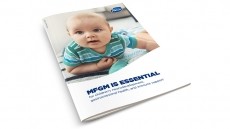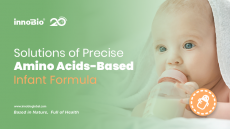ISO’s new infant formula standards set out methods to assess nutrient content

The standards, created alongside the ISO and the International Dairy Federation (IDF), set out methods for determining the nutrient levels in these infant-focused products ensuring labelling meets international standards.
Erik Konings, convenor of the working group that developed the standards, describes the publications as a “big win for the infant formula industry, and for the consumer, as they are the result of true international cooperation to protect consumer health and facilitate trade”.
“These standards provide an effective way of demonstrating compliance with national and international regulations as they represent a globally harmonised method of testing in line with other standards-developing organisations in the sector, such as AOAC INTERNATIONAL and the IDF,” he adds.
“What’s more, this cooperation has been much appreciated by Codex, a key ISO partner, as it is essential for global consistency and improved quality overall.”
SPIFAN project
Developed as part of the Stakeholder Panel on Infant Formula and Adult Nutritionals (SPIFAN) project, the initiative has now established a set of standard performance requirements and methods of analysis for 20 or more priority nutrients in infant formula and adult nutritionals.
The project also serves to revise outdated analytical methods that have proved inadequate in determining the level of specific nutrients in the newer types of infant formula currently available.
The ISO also says the introduction of new standards also consolidates the multiple methods scientists have at their disposal in determining nutrient makeup that makes correct labelling tricky to monitor.
The latest additions include ISO 23443, a set of standards for a method to determine the β-carotene and lycopene in infant formula and adult nutritionals in solid (i.e. powders) or liquid (i.e. ready-to-feed liquids and liquid concentrates) forms.
The method referred to is a reversed-phase ultra-high-performance liquid chromatography (RP-UHPLC) and UV-visible detection.
ISO 20633 specifies a method for the simultaneous quantitative determination of vitamin E and vitamin A (retinol) present in all forms of infant and adult formulas (powders, ready-to-feed liquids and liquid concentrates).
The standard states that the innate amount of retinol in products is insignificant as the vitamin is not used for fortification purposes and therefore is not addressed in this method.
The document also adds that stereoisomers of vitamin E, α-tocopherol and α-tocopheryl acetate, are not differentiated in this method.
Best of the rest
ISO 20634 focuses on the method that quantitatively determines vitamin B12 content in infant and adult formula (powders, ready-to-feed liquids and liquid concentrates) by reversed phase high performance liquid chromatography.
ISO 20635 refers to a method for the determination of vitamin C (L-ascorbic acid) present in all forms of infant and adult formulas (powders, ready-to-feed liquids and liquid concentrates).
The ISO identifies (ultra) high performance liquid chromatography with ultraviolet detection (U)HPLC-UV as the method of choice as it is able to distinguish between D-ascorbic acid (isoascorbic- or erythorbic acid) and L-ascorbic acid.
Other ISOs in the series include ISO 20636, which specifies a method for the quantitative determination of vitamin D2 and/or vitamin D3 in infant formula, and adult nutritionals in solid (i.e. powders) or liquid (i.e. ready-to-feed liquids and liquid concentrates) forms using liquid chromatography-mass spectrometry.
ISO 23443 and the other standards in the series were developed by working group WG 14, Vitamins, carotenoids and other nutrients, of technical committee ISO/TC 34, Food products, the secretariat of which is held jointly by AFNOR and ABNT, ISO’s members for France and Brazil.














